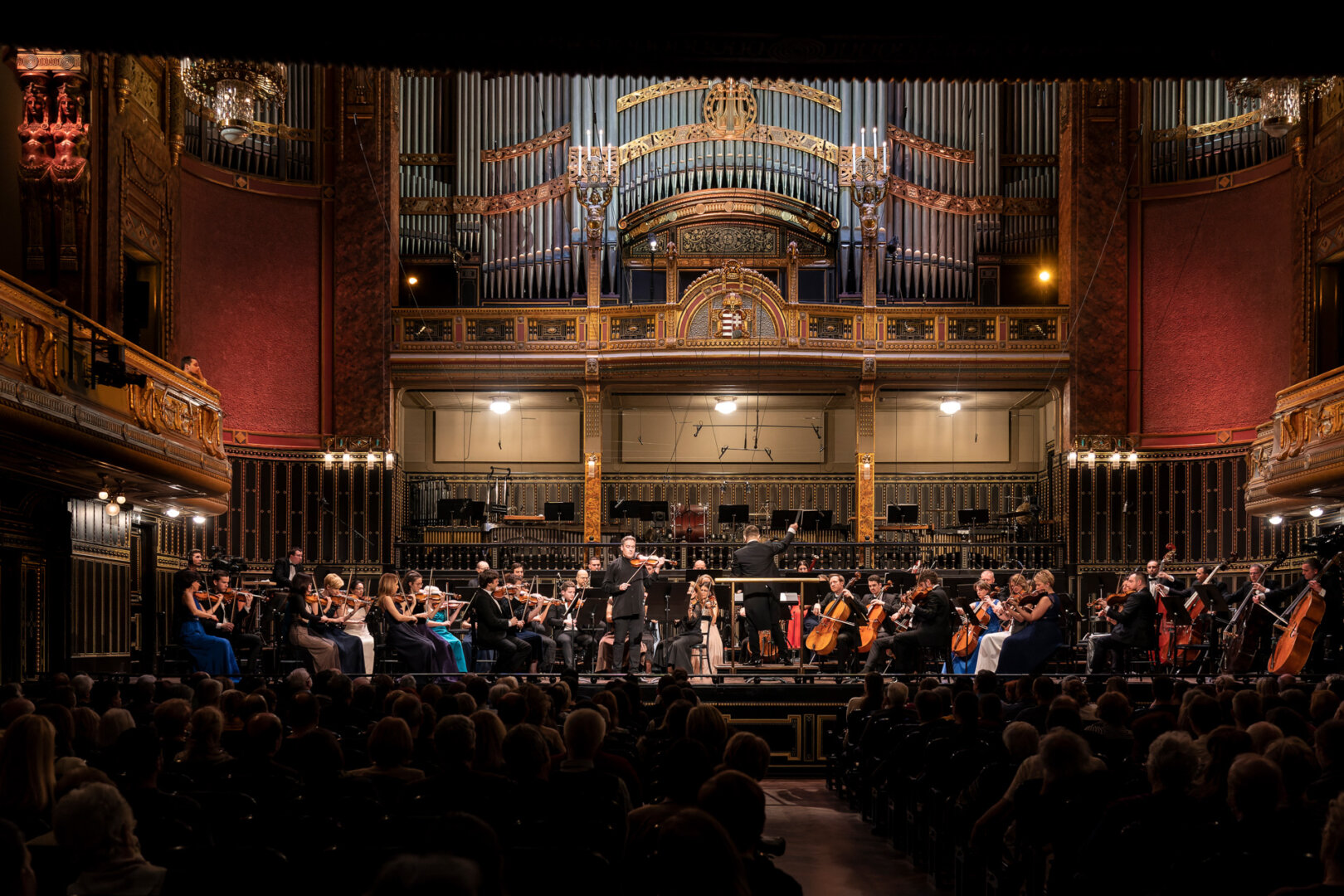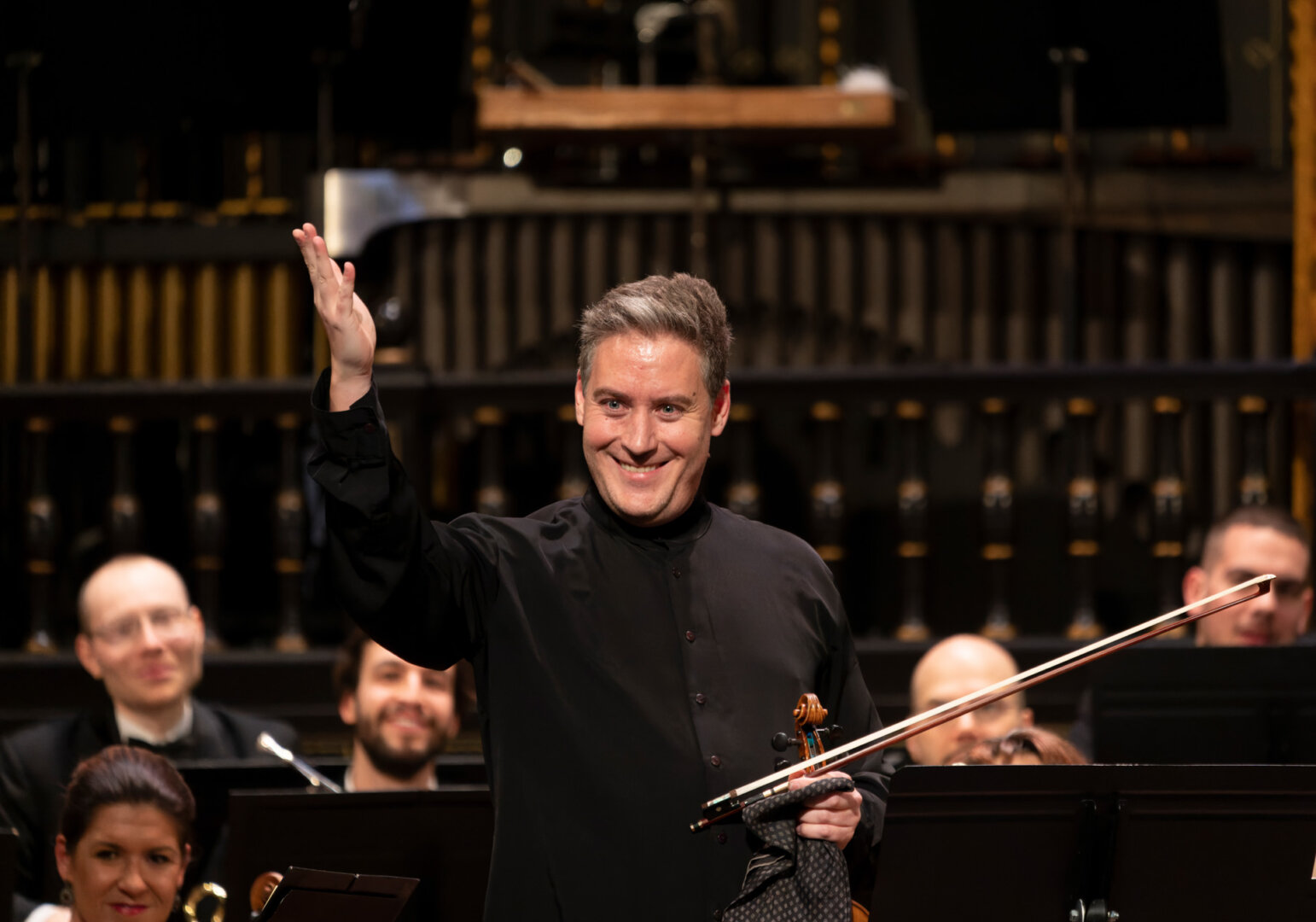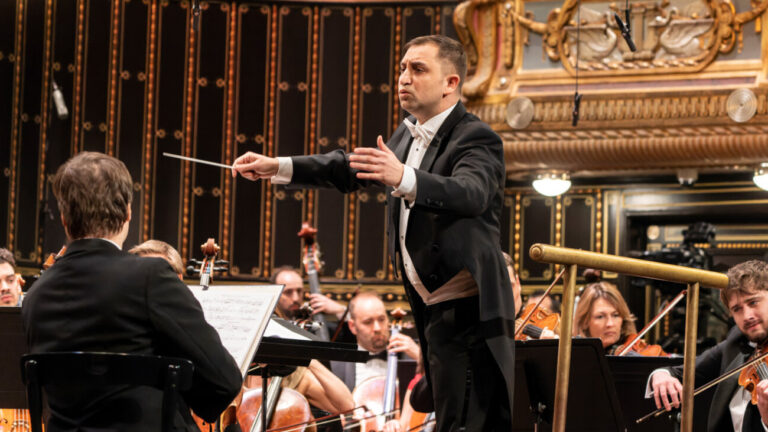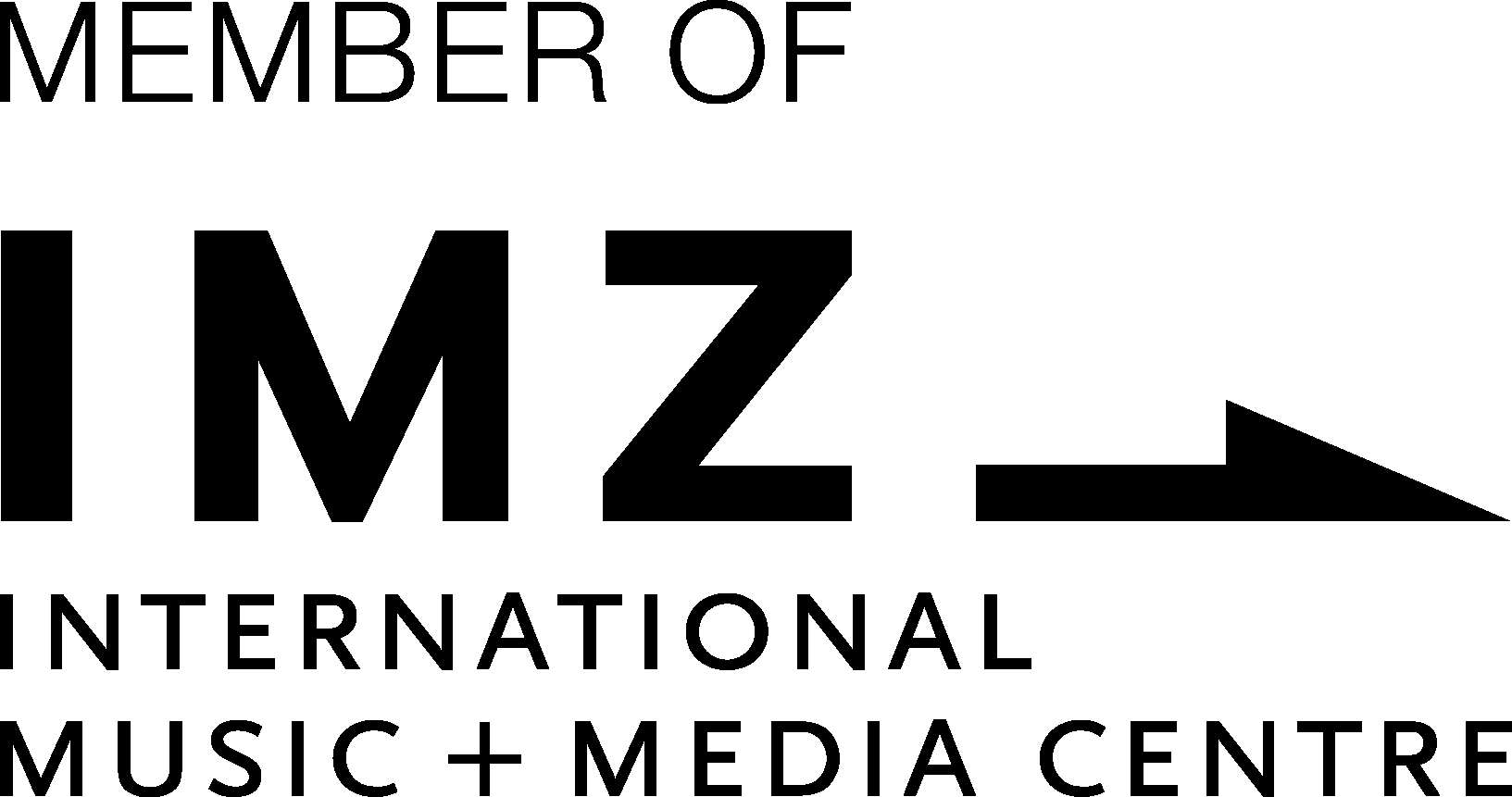Six years ago, I attended a concert in Müpa Budapest that featured American composer John Adams’ “Harmonielehre”— the remarkable orchestral triptych he wrote in 1985 that has gone on to be considered his pre-eminent work with roots in the Minimalist style popular at the time. On 19 March, the Óbudai Danubia Zenekar scheduled the “Harmonielehre” on their program along with Arnold Schönberg‘s “Theme and Variations” Op. 43/b, and Max Bruch’s Violin Concerto no. 1. This time around, hearing that Adams piece was a completely different experience.
My 2016 review of the performance of the Adams work rather dispassionately observed its compositional uniqueness and noted Adams’ ability to comprehend the listener’s psychological capacity to endure repeated phrases before they became tiring. Nothing about that performance had ignited my interest beyond purely academic scrutiny; frankly, I paid more attention to the performance of the Bartók Viola Concerto that had preceded it, as well as the last-minute substitutions for both the soloist and the maestro that evening.
So, why, to my ears, should those two hearings of “Harmonielehre” be so radically different? Aside from the acoustical properties of the Liszt Academy, the most palpable difference was its conductor – Róbert Farkas, and how he extracted essential elements from the score. His version of this kaleidoscopic work felt like jolts of electricity going through the room and our bodies, even long after it had ended.
This is a phenomenon I have consistently witnessed in all of Farkas’ performances I’ve heard since last year; in particular, his conducting of Tchaikovsky’s Symphony No. 4 last October. I’m not normally a fan of that composer, but Farkas’ interpretation stunned me to the point of tears – I hadn’t been so excited about a Tchaikovsky symphony since hearing Charles Dutoit conduct the 5th (one of the more overplayed war horses) in Italy many years ago, where he drew out the raw guts of the piece and transformed it into exotic perfume.

Farkas has that same instinct. During my time in Budapest, I have witnessed many maestros deliver outstanding performances with consummate expertise, flair, and personality, as well as those who are understated and self-effacing, and all with good results. But there is something about Farkas’ whole being on the podium that registers in a slightly different way to the audience, and undoubtedly to the orchestral players as well. His magic is to dig deeply into the visceral and vibrational aspects of the music, while carefully steering it to a quantum level of thrill. While others launch fortissimo blasts with maximum podium effort, Farkas cleverly prepares us for the sonic bomb that he engineers through the prism of his third-eye force-field.
The concert began with a lesser-known work by Schönberg: his Theme and Variations, op. 43/b –the orchestral version of a wind-band original score dating from 1943. In it, the composer playfully stretches the limits of the instruments within a rather wandering lyrical terrain. It also wanders in and out of various tonal systems, and is often quite reminiscent of Hindemith’s style. The seven short variations nonchalantly almost segue into each other; I surmise that this particular approach may have mirrored the way he had adapted to his new life in the American West. After a long career in Berlin and Vienna, he relocated to Los Angeles in 1941, where he continued teaching and composing. Maestro Farkas and the Danubia orchestra excelled in their exuberant interpretation of this complex work – which for this program, became a pivot point for continuing the journey further into the 20th century.

But to temporarily touch base with European roots, the program zig-zagged back to 1866 for Bruch’s early romantic Violin Concerto no. 1. The soloist was one of Hungary’s exemplary violinists, Kristóf Baráti, who produced exceptionally mellifluous tones from his Stradivarius. This opus was a nice choice to serve as sweet ear candy between the two spicier 20th century works, and Baráti’s performance was a blissful experience.
“Harmonielehre” is Adams’ tip of the hat to the title of Schönberg’s foundational book on music theory and composition, but the score was inspired by Adams’ own dreams and visions. He opens the first movement in a somewhat Glass/Reich style: an ocean of orchestrational wonder, rich with ostinato bass clarinet buzz, the perpetual motion energy of repeated phrases, and the synchronized sound of mallets on vibraphones, marimbas and xylophones. The second movement, dubbed “The Anfortas Wound,” connects to the mythical king in Wagner’s ‘Parsifal” who is kept alive by the Holy Grail. The string-heavy scoring evokes dream-like spiritual and religious contemplation. The third movement’s jocular title: “Meister Eckhardt and Quackie” refers to another dream: a cosmic space flight with the German philosopher. For this, Adams uses the same opening chords and textures from the first movement to give us the thrill of lift-off, and then we floated through a dramatic interstellar rocket expedition underscored by a soundscape that used the extremes of each instrument’s capacity (another reflection of the Schönberg piece), bringing us to the powerful end. On this glorious evening, with a proprietary combination of passion and precision, Farkas took us all on a ride to the moon, or Saturn – or whichever galaxy that Adams (and Farkas) wanted us to go.











